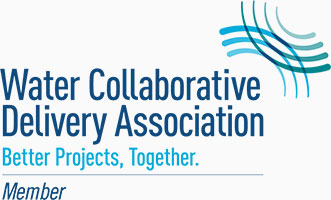Collaborative Delivery
Collaborative delivery methods allow for all stakeholders to be involved from the start.
Collaborative project delivery means that all stakeholders—the owner, design engineer, and contractor—work closely together throughout a project’s entire lifecycle. The early involvement that collaborative delivery facilitates allows for cost certainty, an accelerated schedule, and field construction experience that improves contractability and adds value during design.
Collaborative project delivery is a project-first mentality, that requires teamwork at the highest level. It requires a strong foundation, big ideas, and the flexibility to change course when necessary.
Garney’s expertise and vision lets our clients leverage all parties’ perspectives through collaborative delivery. We love the exchange of ideas that come with strong partnerships.
Collaborative delivery lets this happen earlier, so every strategic decision is driven toward a safer jobsite, a faster timeline, and providing best value–all while keeping the focus on teamwork.
GARNEY HAS LED
through their first collaborative delivery project
and collaborative delivery accounts for
current work
That’s a big deal. We don’t expect you to know the details of the process, we can handle those. We know the ropes and are excited to show you how these delivery methods can make your project a success.
Benefits of Collaborative Delivery
Compared to a traditional design-bid-build delivery method, there are some distinct advantages to selecting collaborative delivery.
- Accelerates schedules
- Best value decisions
- Managed risk for owners
- Improves quality
- Inspires innovation
- Improves cost certainty
Methods We Collaborate
Construction Manager at Risk (CMAR)
The owner retains an engineering firm and a CMAR firm under two separate contracts – one for design and one for construction. CMAR project delivery is most often chosen when the owner wants to capture some of the benefits of design-build delivery, while maintaining direct control of project definition and design. Engaging a CMAR early in the design development stage can optimize technical excellence, constructibility, value management, and risk management for all parties. [source: WCDA]
Fixed-Price Design-Build
The owner executes only one contract with a single point of responsibility for both design and construction. The owner provides the requirements and performance needs of the project and then a team comprised of a designer and contractor work together from the beginning, providing unified project recommendations to fit the owner’s schedule and budget. The team provides the owner with a conceptual design, along with a fixed-price to design and construct the project. Any changes are addressed by the entire team, leading to collaborative problem-solving and innovation, not excuses or blame-shifting. [source: DBIA]
Progressive Design-Build
Two-phase delivery method in which the project’s design, cost-estimating, construction schedule, and final GMP or fixed price are developed during the initial phase. If the owner and design-builder agree on the schedule and the GMP or fixed price during the first phase, the final design, construction, and commissioning are completed during the second phase. [source: WCDA]
Public-Private Partnership (P3)
P3 is a contractual agreement between a public agency and a private entity that allows for greater private participation in the delivery of projects
Learn more about P3Contact Us
"*" indicates required fields

